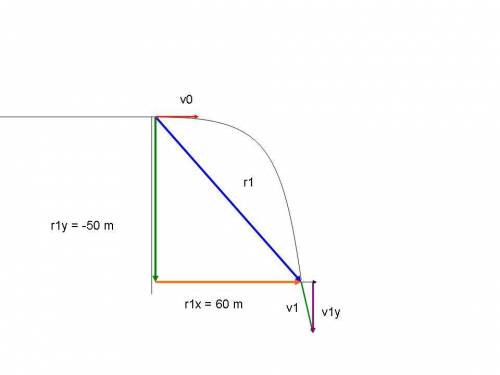
Physics, 21.11.2019 18:31 ocanadyoynsr6
Acelebrating student throws a water balloon horizontally from a dormitory window that is 50 m above the ground. it hits the ground at a point 60 m from the building without appreciable air resistance.(a) what will be the horizontal component of the velocity of the balloon just before it hits the ground? (b) what will be the magnitude of the vertical velocity of the balloon just before it hits the ground?

Answers: 1


Another question on Physics

Physics, 21.06.2019 19:10
Suppose you were asked to find the torque about point p due to the normal force n in terms of given quantities. which method of finding the torque would be the easiest to use?
Answers: 3

Physics, 22.06.2019 02:00
Askydiver weighing 140 lb (including equipment) falls vertically downward from an altitude of 19,000 ft and opens the parachute after 18 s of free fall. assume that the force of air resistance, which is directed opposite to the velocity, is of magnitude 0.55|v| when the parachute is closed and is of magnitude 14|v| when the parachute is open, where the velocity v is measured in ft/s. assume that acceleration due to gravity has magnitude 32 ft/s/s; remember that weight is the product of mass and gravitational acceleration. (a) find the speed of the skydiver when the parachute opens. (b) find the distance fallen before the parachute opens. (c) what is the limiting velocity vl after the parachute opens? (d) determine how long the sky diver is in the air after the parachute opens. (e) plot the graph of velocity versus time from the beginning of the fall until the skydiver reaches the ground.
Answers: 1

Physics, 22.06.2019 05:00
Modern physics a photon emitted from an excited hydrogen atom has an energy of 3.02 electron volts. which electron energy-level transition would produce this photon? a. n=1 to n=6 b. n=2 to n=6 c. n=6 to n=1 d. n=6 to n=2 i chose b but the correct answer is d can someone tell me why? and what's the difference?
Answers: 1

Physics, 22.06.2019 11:00
The charge on an electron is 1.60218 × 10−19 c and its mass is 9.10939 × 10−31 kg. how strong a magnetic field must be experienced by the electron if its path is a circle of radius 5.5 cm? answer in units of t.
Answers: 3
You know the right answer?
Acelebrating student throws a water balloon horizontally from a dormitory window that is 50 m above...
Questions




Mathematics, 18.10.2019 11:30



Mathematics, 18.10.2019 11:30

Mathematics, 18.10.2019 11:30


Mathematics, 18.10.2019 11:30

Mathematics, 18.10.2019 11:30




Mathematics, 18.10.2019 11:30


History, 18.10.2019 11:30


Mathematics, 18.10.2019 11:30

Biology, 18.10.2019 11:30




